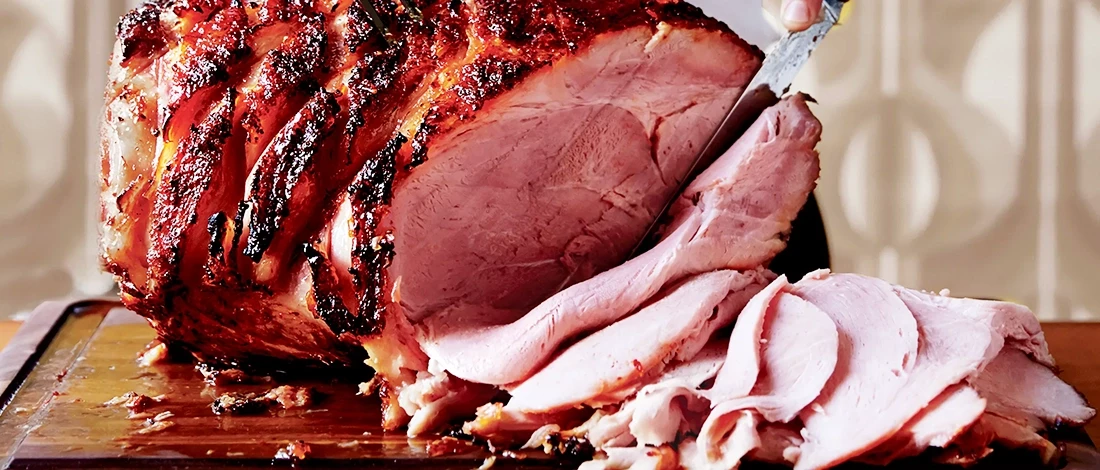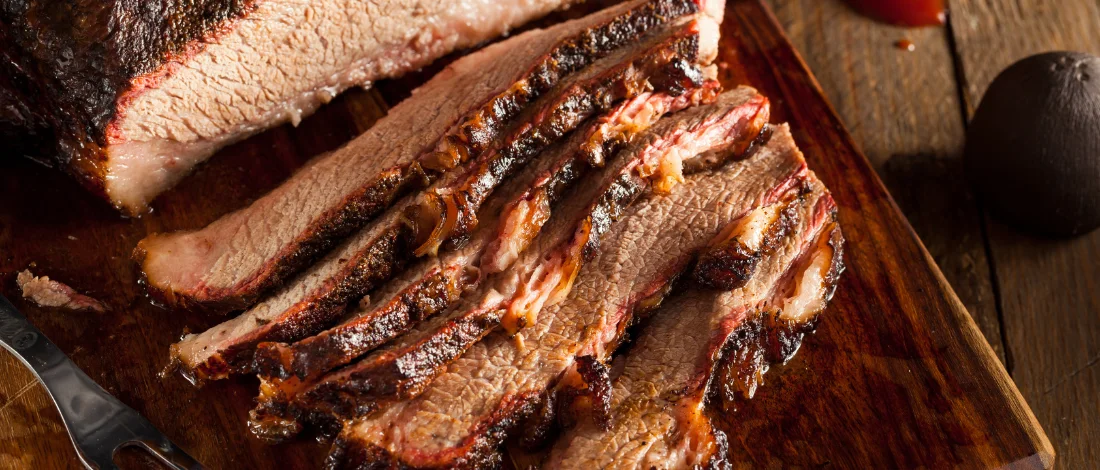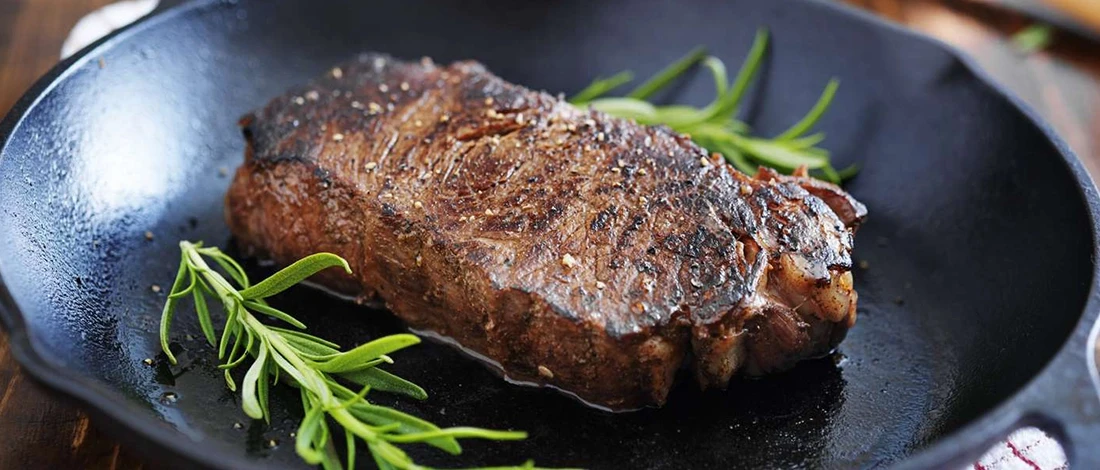At Carnivore Style, we understand that most people know how to cook a juicy piece of meaty top sirloin steak.
But cooking sirloin steak requires another level of expertise. It’s a different cut and probably requires another method of cooking.
It took me literally hundreds of hours to test and experiment with different recipes in order to compile the best cooking tips for petite sirloin steak.
With nearly a decade of experience in the nutrition industry, I can confidently state that this steak is versatile, packed with nutrients, and offers excellent value for the money. Additionally, it greatly enhances the grilling experience, making it truly exceptional.
Moreover, mastering cooking petite sirloin steak and sourcing the best cuts are equally crucial. Locate petite sirloin steak easily by exploring local butcher shops, quality markets, and reputable online sources to procure this delectable cut.
Quick Summary
- The ideal way to cook a petite sirloin steak is to marinate it overnight and cook it to medium-rare.
- Recommended methods of cooking the steak are pan-frying, grilling, or broiling.
- Petite sirloins need to be seared to retain their tenderness and flavor.
Petite Sirloin Steak Cooking Methods
There are different ways to prepare sirloin steak. You can either marinate, pan sear, or grill the steak.
Marinate Petite Sirloin Steak
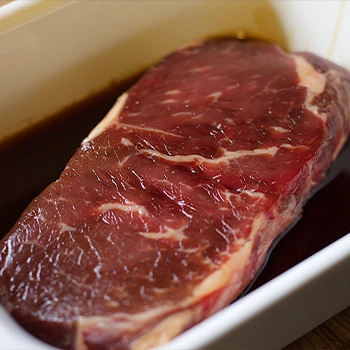
To marinate petite sirloin steak properly, you'll need the right seasoning and the appropriate grill or pan. I always suggest investing in proper cooking gear; it makes everything easier, cleaner, and juicier.
Petite sirloin steaks can be slightly tougher than other cuts of top sirloin steaks, and a good marination process helps it to tenderize – primarily if you use the right ingredients.
A dash of acidity, like lemon juice or vinegar, will work into your amazing petite or top sirloin, helping it get tender even before cooking.
The other reason marination is so essential to this top sirloin steak is that the meat absorbs the seasoning flavors of salt and pepper, resulting in more delicious-tasting meat even in the middle.
That might seem impossible, but that’s why leaving the marination overnight for 24 hours is ideal.
The seasonings, such as salt and pepper, work their way into the flesh and combine with the meat juices alongside fresh garlic and chili powder. That leads to a genuinely flavorsome steak in every bite!
Remember to discard the remaining marinade before you cook your petite sirloin. If you season your steak well and leave it long enough to marinate, you don’t need to use the leftover liquid.
How To Pan Sear Petite Sirloin Steak
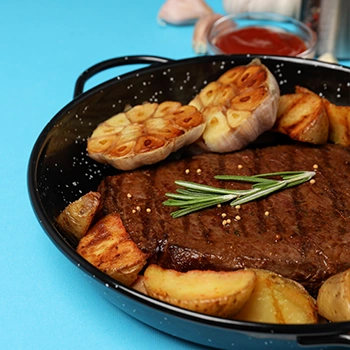
To pan-sear petite sirloin steak, follow these steps:
- Preheat a cast iron pan to a hot, yet controlled temperature (not scorching).
- Searing is vital; achieve a balanced sear for flavor.
- Prevent burning by maintaining a temperature that cooks the steak evenly throughout.
“The key is to start cooking the steaks at a high heat so the outside gets a nice brown crust, then move ’em to a more moderate environment so that the meat can be cooked just right without scorching the outside or overcooking the inside.” - Guy Fieri, American professional chef
You want to heat your cast iron pan to a medium-high for your best pan-seared steak. Lightly oil it with olive oil or melted butter (minced garlic butter for more flavor), and allow the saturated fat to heat up.
Once it is visibly hot, place your petite sirloin into the hot pan and leave it alone for 4-5 minutes.
Do not move or turn it in olive oil or canola oil. Allow it to sear on the cast iron skillet. After 4-5 minutes, turn the steak around to sear the other side while ensuring it has oil.
Again, avoid moving or turning until those few minutes are up and your steak has a gorgeous brown seared crust.
If your steaks are slightly thicker, you can also sear the sides in the iron skillet. Hold up the steak with a tong for 2-3 minutes on the sides – be careful not to burn yourself from oil splatters.
After searing your steak, remove it from the heat. Let the pan-seared steaks rest so the heat can complete the cooking process and juices can redistribute.
Your perfect steak is ready if you enjoy a rare/medium-rare finish with a distinct flavor.
If you want to cook the seared steak further, one of the easy recipes is to turn the heat down to medium, fry it for another 2-4 minutes, or add the good steak to a pot of whatever dish you are cooking, like mashed potatoes.
How To Grill Petite Sirloin Steak
Grilling petite sirloin steak involves enhancing its natural flavors. Begin by seasoning and marinating with garlic powder and soy sauce for a delicious outcome.
Grilling petite sirloin steaks is akin to grilling other steak cuts, but the searing process is crucial. It seals in the juices, thus preserving the flavor and preventing the meat from drying out.
After preheating your grill to high heat, ideally, around 450 degrees F, place your petite sirloin steaks on direct heat.
Cook them for about 5 minutes per side, achieving those wonderful grill marks and sealing in the taste.
If you prefer your steaks more cooked, shift them to indirect heat for another 5-10 minutes, guided by your desired doneness.
A meat thermometer can be handy in this step. Alternatively, a cast iron skillet can be used for searing if you're cooking indoors [1].
With the right technique, you'll end up with a succulent sirloin steak, brimming with great nutritional calories.
How Long To Cook The Petite Sirloin Steak

The cooking time for petite sirloin steak varies based on desired doneness—rare to well-done. Use a meat thermometer and personal taste preferences to determine readiness.
Here is a guide on timing and temperature in degrees F:
- Rare – 2-3 minutes at 120-130°F
- Medium – 3-4 minutes at 140-150F
- Medium Rare – 4-5 minutes at 130-135°F
- Medium Well – 6-7 minutes at 155-165°F
- Well Done – 8-10 minutes at 165-170°F
Remember that the searing portion requires 3-5 minutes with all types of doneness. After that, move it to indirect heat, medium-high heat, or lower the degrees F temperature of your stove/oven for the remaining time [2].
You will get a good sear if you follow these cooking times while paying attention to room temperature.
Also Read: How to Cook a Frozen Ham?
Let Your Petite Sirloin Rest After Cooking

After cooking, letting your delicious steak rest might not seem like a big deal. Especially if you want to dig in and eat; however, you must let it rest before cutting into it.
For a minor cut like petite sirloin dish recipes, let it rest for at least 5 minutes. The same applies whether it's ball tip steak, loin ball tip steak, or filet mignon.
I always remember how American celebrity chef and author - Anthony Bourdain says, “Take it off the heat and don’t touch it.”
Allowing the loin region steak a little waiting time before serving the delicious recipe allows the juices to redistribute to the steak’s center, which helps keep it tender. It helps to even out the color and flavor of your petite sirloin steaks.
The high heat continues the cooking steak process as it cools down, making it even more important to allow that rest time, resulting in a perfectly delicious, juicy, tender, sirloin steak recipe.
Related Articles:
At Carnivore Style, we love helping people get the most out of every cut of meat, especially underrated ones like petite sirloin. Check out our other recipes and tips to keep improving your carnivore cooking skills.
References:
- https://www.guyfieri.com/
- https://www.health.state.mn.us/people/foodsafety/cook/cooktemp.html



